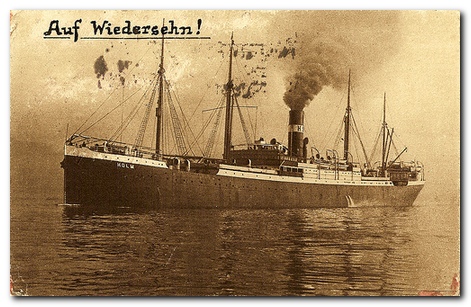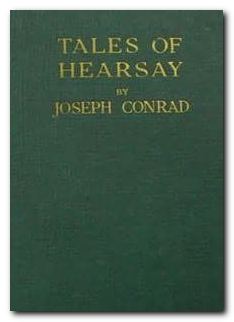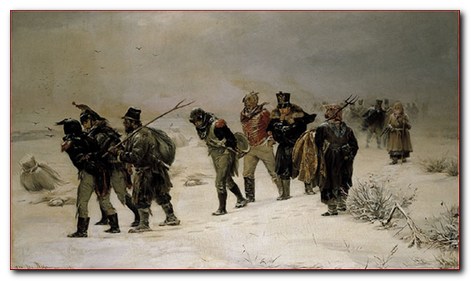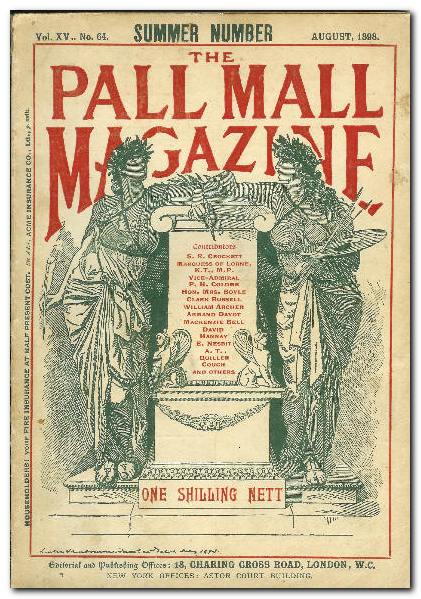tutorial, commentary, study resources, and web links
The Rescue was first published by J.M.Dent & Sons in 1920. It forms one part of The Lingard Trilogy, of which the other two are Conrad’s first novels, Almayer’s Folly (1895) and An Outcast of the Islands (1896). All of them feature Tom Lingard, an independent and adventurous sea captain. Although it was the last in the series to be published, The Rescue: A Romance of the Shallows deals with events which pre-date the earlier stories. The sequence is what might be called a ‘trilogy in reverse’. Conrad began writing the novel in 1897, but a year later put it to one side, uncertain how to continue the narrative. He took up the work again twenty years later in 1918.
first edition – J.M.Dent & Sons 1920
The Rescue – critical commentary
The strengths
It is strange that after the tremendous achievements of his ‘middle period’ — from Lord Jim and Nostromo to Under Western Eyes — Conrad should fall back into the sub-standard ‘adventure story’ pattern of Almayer’s Folly and An Outcast of the Islands – although The Rescue is entirely consistent with the other two parts of the ‘Lingard Trilogy’ in being over-long, politically confusing, and full of clumsy, unconvincing plot devices.
The main strengths of the novel are in the characterisation of the central figure captain Tom Lingard, and the powerful but doomed romantic liaison he forms with Edith Travers. Lingard is of course something of a stock figure of boy’s adventure stories – the tough, fearless, and heroically moral character who is limited only by his lack of sophistication.
Lingard left his Devonshire roots when still a teenager and has lived as a seaman and an ‘adventurer’, eventually building up the capital to buy his beloved brig, the Lightning. But his roving bachelor life has not prepared him to cope with the experience he undergoes when the Lightning meets the Hermit.
When Lingard comes into contact with the beautiful Edith Travers, he cannot understand his own feelings or his reaction to her. It is Conrad’s triumph to present a narrative in which Lingard cannot understand why he wants to look at and talk to this seemingly remote women – when it is quite obvious to the reader that he is falling in love with her. He does not have the emotional vocabulary to deal with the experience.
She is in a similar position – having immured herself in a carapace of unfeeling rectitude as a response to her loveless marriage to Martin Travers. She takes a critical, distant attitude to everyone (except d’Alcacer) but feels herself melting before the power of Lingard’s emotional honesty, his frankness, and his positive attitude to life.
She tries to control her own reactions, but realises that he represents an elemental life force. The two would-be lovers also trust and understand each other at a level which does not need articulation and cannot be explained to outsiders. This is a very romantic notion – which is intensified since the relationship is unconsummated and doomed to failure.
The weaknesses
The Rescue has many of the story elements of his earlier novels. These include the fearless and upright young seaman; the friendship with a native prince; the relationship with a native girl; the setting of the Malay Archipelago; and lots of named characters who have no real significance in the story. But apart from the relationship between Lingard and Mrs Travers (discussed above) Conrad does not explore any new themes with these subjects.
There are a number of other irritating weaknesses in the novel. Despite all the lengthy and elaborate scene-setting, topographical description, and atmosphere-creation, it’s very hard to conceptualise the events and where they are taking place. The same is true of the rival native factions who are fighting for power. We are not provided with any persuasive reasons why they are in conflict with each other; they are difficult to tell apart; and they are simply not so convincing as his European characters. (It has to be said that the same is true of the two other novels in this trilogy, Almayer’s Folly and An Outcast of the Islands.)
At a very trivial level – but surprisingly for one so technically conscious of maritime issues as Conrad – the Travers run aground sailing in what he describes as a yacht. It continues to be described as a yacht for almost the entire novel – but then in the last few pages is suddenly referred to as a schooner. Now whilst it is true that a schooner may serve as a yacht (‘a recreational ship’) he also just as suddenly gives it a name – the Hermit. This has the unfortunate effect of suggesting that he was not he was not concentrating or had not fully conceptualised the materials of the book
Narrative chronology
Conrad is famous for the manner in which he radically re-organised the chronology of events in his narratives. In Lord Jim for instance the crucial initiating episode when Jim (and the rest of the crew) abandon the Patna is not described in detail at the start of the tale where it belongs: it is constructed retrospectively from a number of different sources as the novel progresses – that is, as a series of flash backs. The technical term for this device is analepsis.
Very often this strategy can intensify dramatic tension in the story, or it can be used to withhold information from the reader so as to create mystery or a ‘double perspective’ in which an event already encountered needs to be seen in a different light. Conrad also uses this device quite frequently to create dramatic irony.
Sometimes he uses the opposite device – prolepsis, or the flash forward. At some point in the story we are told what happens later, and are left wondering what happened in the ‘gap’, the connection between the two parts, or how the later even came about.
But it has to be said that the reasons for using these devices are not always made plain or are simply not convincing. The Rescue contains just such a case in point. The most unnecessary flash forward occurs at the end of Part IV in which considerable time and effort has been expended to build up dramatic tension describing Lingard’s attempt to rescue the two men (d’Alcacer and Travers) who have been captured by the local natives.
Yet for no discernible reason, Part V begins with the two men safely back on board the Emma, and the explanation of how Lingard negotiated their release is delayed until much later. Dramatic tension is thrown away with no dramatic gain.
Narrative chain
Conrad is also fond of constructing his narratives from a number of different sources or narrators. In The Rescue he chooses an omnipotent third person narrative mode – with no outer narrator such as Marlow who recounts much of Lord Jim and Heart of Darkness. But he still chooses a number of different sources by having characters such as Jaffir (the messenger) transmit lengthy accounts of events which have happened elsewhere to another character (Lingard).
Because events are happening in a number of different locations, Conrad also resorts to the clumsy and fairly unconvincing device of people writing long letters to each other – even though the two principal locations (the brig and the yacht) are positioned quite close to each other. The letters are doubly unpersuasive since they are written in the form of dramatic fictional narratives rather than personal correspondence, and they are clearly Conrad continuing his account of events under another guise.
The Rescue – study resources
![]() The Rescue – CreateSpace editions – Amazon UK
The Rescue – CreateSpace editions – Amazon UK
![]() The Rescue – CreateSpace editions – Amazon US
The Rescue – CreateSpace editions – Amazon US
![]() The Complete Works of Joseph Conrad – Kindle eBook
The Complete Works of Joseph Conrad – Kindle eBook
![]() The Rescue – eBook versions at Project Gutenberg
The Rescue – eBook versions at Project Gutenberg
![]() The Cambridge Companion to Joseph Conrad – Amazon UK
The Cambridge Companion to Joseph Conrad – Amazon UK
![]() Routledge Guide to Joseph Conrad – Amazon UK
Routledge Guide to Joseph Conrad – Amazon UK
![]() Oxford Reader’s Companion to Conrad – Amazon UK
Oxford Reader’s Companion to Conrad – Amazon UK
![]() Joseph Conrad: A Biography – Amazon UK
Joseph Conrad: A Biography – Amazon UK
![]() Notes on Life and Letters – Amazon UK
Notes on Life and Letters – Amazon UK
![]() Joseph Conrad – biographical notes
Joseph Conrad – biographical notes
The Rescue – plot summary
Part I. The Man and the Brig
Young Tom Lingard is the owner and captain of a sailing ship, the Lightning which lies becalmed at night, somewhere in the Malayan archipelago. With his chief mate Shaw he discusses the problems that women can cause. Suddenly they are approached by a search party in a boat seeking help for a yacht which has become stranded on mudflats on a nearby island.
Carter, the commander of the boat is interrogated in rather a hostile and suspicious manner which leaves him puzzled, but his boat is put in tow. When they reach the island Lingard handles his brig skillfully, but it transpires that he was heading for the island himself. He fires a warning shot into the interior, then joins the stricken yacht.
Part II. The Shore of Refuge
The story backtracks to explain how Lingard first came into contact with the Wajo leader Hassim, and their instant bond of friendship. Lingard goes to visit Hassim, but is warned off by Jaffir, who reports that Hassim is now a fugitive in a civil war. But Lingard takes a long boat on shore to rescue him, and the sortie is a success.
Lingard begins trading in arms and saving money to help Hassim in the re-conquest of Wajo. He is followed around by Jorgenson, an old sea-captain whose life has been ruined. When Lingard explains his plans to Jorgenson, the older man warns him against taking action, and offers his own life as an example of failure. But in the end, with no future prospects, he agrees to join in the venture, along with his prematurely aged native wife.
Lingard has previously visited local chief Belarab to ask for help, and offers him guns in exchange for manpower. Lingard feels that since he has saved Hassim’s life, he is tied to him in some mysterious way. He buys the old schooner Emma and runs it aground close to Belarab to use as a weapons store, placing Jorgenson in charge.
Part III. The Capture
When Lingard arrives on the stricken yacht he is met with hostility from its owner Mr Travers, who thinks he is a vulgar adventurer, intent on profiting from salvaging the yacht. Lingard sees the yacht and its passengers as merely annoying obstacles who have come between him and his plans.
The passenger d’Alcacer is in flight from Europe following the early death of his wife and is friendly with the owner’s enigmatic wife Edith Travers. Whilst Lingard and Travers trade insults with each other, d’Alcacer takes an instant liking to Lingard and tries to mediate. But the dispute is interrupted by the sudden arrival of Hassim and his sister Immada.
Mrs Travers is fascinated by Immada’s attractiveness, but the girl and her brother reproach Lingard for recently neglecting them, and leave with him when the interview comes to a fruitless conclusion.
On her own after dinner on the yacht, Mrs Travers reflects upon the failure of her romantic dreams. Suddenly, Lingard rows up alongside to talk to her, telling her he feels completely detached from his British roots and more at home with the Malaysians.
He wants her to help him by pretending to be frightened on the yacht, so that they will have no alternative but to accept Lingard’s offer to house them on the brig. He tells her the whole background story, which touches her romantic sentiments. She feels existentially elated by his frankness and emotional honesty. She is preparing herself to act on his behalf when she is told that her husband and d’Alcacer have been kidnapped whilst walking along the shore.
Back on the brig, Lingard reads a letter he has received from Jorgenson describing disquiet amongst the natives who want to attack the stranded yacht. The letter warns of a threat from rival local leader Tengga to seize the arms stored on the Emma.
The letter goes on to describe the arrival of Sherif Daman, who also wants the arms for the recapture of Wajo. Lingard receives Carter on board as emissary from the yacht. Carter cannot understand Lingard’s or Mrs Travers’ motivation in the affair. Then chief mate Shaw protests against Lingard’s plans – because he appears to be siding against fellow white men on the yacht.
Part IV. The Gift of the Shallows
Lingard nevertheless goes ahead, and takes Mrs Travers from the yacht onto the brig. He is overawed by her attractiveness and the knowledge that she understands him. He appears to be falling in love with her, but is not aware of it himself. She asks him to rescue d’Alcacer and her husband.
Hassim arrives on the brig with his sister and reports on his visit to the camp where the two prisoners are being held. Lingard decides to recapture the prisoners single-handedly, and he puts Carter in charge of the brig. Immada protests that he is putting himself at risk, whereupon Mrs Travers declares that she will go with him, much to the consternation of Carter, whilst Shaw is outraged at being left with no clear orders.
When Lingard and Mrs Travers reach the Emma Jorgenson is truculent and hostile . Lingard questions Mrs Travers somewhat jealously about d’Alcacer, whilst she in her turn thinks that Lingard is enamoured of Immada, by who they are joined on board with Hassim.
Part V. The Point of Honour and the Point of Passion
Travers has been rescued and Mrs Travers has adopted native dress on board the Emma. Travers delivers an embittered and pompous lecture to his wife, criticising her behaviour. They argue about Lingard, about whom Travers is arrogant and snobbish.
Travers and d’Alcacer have been released temporarily into Lingard’s care. Mrs Travers has had further heart-to-heart conversations with Lingard, and is deeply impressed by his character and his personality. She too appears to be falling in love, but doesn’t want to admit it to herself. She would like to share what she knows about Lingard with d’Alcacer, who she regards as a good friend – but she doesn’t.
The story backtracks to describe Lingard’s arrival at Daman’s stockade to negotiate the temporary release of Travers and d’Alcacer. The manoeuvre is successful because of Lingard’s high prestige in the locality.
On board the Emma Lingard and Mrs Travers exchange confidences about their earlier lives until they are joined by d’Alcacer, who has been observing their growing intimacy. After dinner d’Alcacer quizzes Mrs Travers about Lingard, who he calls ‘the Man of Fate’. They wonder what will happen to them, and d’Alcacer guesses that Lingard will be heart-broken over Mrs Travers. He asks her to give him a sign if she thinks they are about to die.
Lingard calls Mrs Travers into his room where they interrogate each other and verbally admit their mutual attraction. Lingard has received a letter from Carter saying that (with good intentions) he has attacked some of the natives from on board the Lightning – which automatically puts Lingard’s plans into jeopardy.
Lingard has despatched Jaffir to find Hassim and Immada, and Jaffir has suggested that the only solution to the problem will be to return the two prisoners to Daman. Lingard and Mrs Travers agree that this must be done quickly. She gives d’Alcacer the warning signal he has requested.
d’Alcacer braces himself philosophically for what he thinks will be certain death, whilst realising that Mr Travers is ill with some sort of fever. When it is time for them to go, Travers claims that his wife is in the grip of some sort of fashionable craze, but it is he himself who is clearly delirious. After a heated departure from Mrs Travers, Lingard takes the two men on shore to deliver them up.
Part VI. The Claim of Life and the Toll of Death
On board the Emma, Mrs Travers regrets the quarrelsome way she and Lingard parted. Jorgenson meanwhile appears to be making fuses for some sort of explosions. As signs of fighting start up on shore, Mrs Travers wants to join Lingard.
Hassim abandons negotiations with Belarab and is heading back to the Emma when he is intercepted by Tengga’s fighters. Jaffir runs to the ship with Hassim’s ring and reports to Jorgenson. Mrs Travers is then persuaded to take the ring as a signal to Lingard..
Mrs Travers is rowed onto shore and reaches the stockade bearing a torch, where Lingard is there to receive her. Because she distrusts Jorgenson and does not realise the significance of the ring, she does not pass on to Lingard the message it represents.
Lingard, d’Alcacer, and Mrs Travers talk to each other in turn around a fire. The Spaniard is mainly concerned with the possibility of being murdered the next day, whilst Lingard thinks Mrs Travers could not help herself but join him. She accepts his devotion and tells him nothing, so as not to disturb him. Meanwhile an envoy from Tengga fails to persuade Jorgenson to leave the Emma.
Two days later, following an explosion of some kind, Lingard is on the Lightning where Carter relates rescuing Jaffir. Lingard recalls in flashback awakening alongside Mrs Travers and being summoned to see Belarab.
Belarab has been informed through spies of all elements of Daman’s and Tengga’s machinations. In the morning mists there appear to be attacks imminent, but when a flotilla of canoes surrounds the Emma, Jorgenson blows up the ship, whereupon Belarab releases the prisoners.
Jaffir’s story continues with his escape from the Emma. He tells Lingard about the ring, then dies. Lingard takes Carter as mate on the Lightning then invites Mrs Travers by letter to meet him on shore.
Next morning d’Alcacer rows Mrs Travers out where she meets Lingard. She wants to confess about the undelivered ring, but he already knows the truth and tells her it would not have made any difference. She departs, returns to the yacht, and throws the ring into the sea. The yacht and the Lightning depart in opposite directions.
The Rescue – principal characters
| Tom Lingard | young captain of the brig Lightning |
| Shaw | fat first mate on the Lightning |
| Haji Wasub | boatswain on the Lightning |
| Carter | young mate on the yacht Hermit |
| Hassim | nephew of a native chief |
| Immada | his sister, a princess |
| Daman | leader of the Illanuns |
| Jorgenson | experienced but discredited ex-captain |
| Belarab | local native chief |
| Martin Travers | arrogant owner of the yacht Hermit |
| Edith Travers | his beautiful and romantic wife |
| d’Alcacer | recently widowed former Spanish embassy attache |
| Tengga | native would-be chief |
The Rescue – glossary
| brig | large sailing ship used for war or commerce |
| calash | light carriage with collapsible top |
| cuddy | a small cabin on a ship |
| gharry | an eastern horse-drawn carriage |
| kris | an asymmetrical dagger with a wavy blade |
| pangeran | the son of a ruler |
| parang | a big Malayan knife or machete |
| peon | a low-ranking soldier or worker |
| prau | long narrow sailing boat |
| sampan | a flat-bottomed wooden Chinese boat |
| sarong | large length of fabric wrapped around the waist |
| serang | the boatswain of a Lascar or East Indian crew |
Joseph Conrad – video biography
 The Cambridge Companion to Joseph Conrad offers a series of essays by leading Conrad scholars aimed at both students and the general reader. There’s a chronology and overview of Conrad’s life, then chapters that explore significant issues in his major writings, and deal in depth with individual works. These are followed by discussions of the special nature of Conrad’s narrative techniques, his complex relationships with late-Victorian imperialism and with literary Modernism, and his influence on other writers and artists. Each essay provides guidance to further reading, and a concluding chapter surveys the body of Conrad criticism.
The Cambridge Companion to Joseph Conrad offers a series of essays by leading Conrad scholars aimed at both students and the general reader. There’s a chronology and overview of Conrad’s life, then chapters that explore significant issues in his major writings, and deal in depth with individual works. These are followed by discussions of the special nature of Conrad’s narrative techniques, his complex relationships with late-Victorian imperialism and with literary Modernism, and his influence on other writers and artists. Each essay provides guidance to further reading, and a concluding chapter surveys the body of Conrad criticism.
![]() Buy the book at Amazon UK
Buy the book at Amazon UK
![]() Buy the book at Amazon US
Buy the book at Amazon US

Joseph Conrad’s writing table
Further reading
![]() Amar Acheraiou Joseph Conrad and the Reader, London: Macmillan, 2009.
Amar Acheraiou Joseph Conrad and the Reader, London: Macmillan, 2009.
![]() Jacques Berthoud, Joseph Conrad: The Major Phase, Cambridge: Cambridge University Press, 1978.
Jacques Berthoud, Joseph Conrad: The Major Phase, Cambridge: Cambridge University Press, 1978.
![]() Muriel Bradbrook, Joseph Conrad: Poland’s English Genius, Cambridge: Cambridge University Press, 1941
Muriel Bradbrook, Joseph Conrad: Poland’s English Genius, Cambridge: Cambridge University Press, 1941
![]() Harold Bloom (ed), Joseph Conrad (Bloom’s Modern Critical Views, New York: Chelsea House Publishers, 2010
Harold Bloom (ed), Joseph Conrad (Bloom’s Modern Critical Views, New York: Chelsea House Publishers, 2010
![]() Hillel M. Daleski , Joseph Conrad: The Way of Dispossession, London: Faber, 1977
Hillel M. Daleski , Joseph Conrad: The Way of Dispossession, London: Faber, 1977
![]() Daphna Erdinast-Vulcan, Joseph Conrad and the Modern Temper, Oxford: Oxford University Press, 1991.
Daphna Erdinast-Vulcan, Joseph Conrad and the Modern Temper, Oxford: Oxford University Press, 1991.
![]() Aaron Fogel, Coercion to Speak: Conrad’s Poetics of Dialogue, Cambridge, Mass: Harvard University Press, 1985
Aaron Fogel, Coercion to Speak: Conrad’s Poetics of Dialogue, Cambridge, Mass: Harvard University Press, 1985
![]() John Dozier Gordon, Joseph Conrad: The Making of a Novelist, Cambridge, Mass: Harvard University Press, 1940
John Dozier Gordon, Joseph Conrad: The Making of a Novelist, Cambridge, Mass: Harvard University Press, 1940
![]() Albert J. Guerard, Conrad the Novelist, Cambridge, Mass: Harvard University Press, 1958
Albert J. Guerard, Conrad the Novelist, Cambridge, Mass: Harvard University Press, 1958
![]() Robert Hampson, Joseph Conrad: Betrayal and Identity, Basingstoke: Macmillan, 1992
Robert Hampson, Joseph Conrad: Betrayal and Identity, Basingstoke: Macmillan, 1992
![]() Jeremy Hawthorn, Joseph Conrad: Language and Fictional Self-Consciousness, London: Edward Arnold, 1979
Jeremy Hawthorn, Joseph Conrad: Language and Fictional Self-Consciousness, London: Edward Arnold, 1979
![]() Jeremy Hawthorn, Joseph Conrad: Narrative Technique and Ideological Commitment, London: Edward Arnold, 1990
Jeremy Hawthorn, Joseph Conrad: Narrative Technique and Ideological Commitment, London: Edward Arnold, 1990
![]() Jeremy Hawthorn, Sexuality and the Erotic in the Fiction of Joseph Conrad, London: Continuum, 2007.
Jeremy Hawthorn, Sexuality and the Erotic in the Fiction of Joseph Conrad, London: Continuum, 2007.
![]() Owen Knowles, The Oxford Reader’s Companion to Conrad, Oxford: Oxford University Press, 1990
Owen Knowles, The Oxford Reader’s Companion to Conrad, Oxford: Oxford University Press, 1990
![]() Jakob Lothe, Joseph Conrad: Voice, Sequence, History, Genre, Ohio State University Press, 2008
Jakob Lothe, Joseph Conrad: Voice, Sequence, History, Genre, Ohio State University Press, 2008
![]() Gustav Morf, The Polish Shades and Ghosts of Joseph Conrad, New York: Astra, 1976
Gustav Morf, The Polish Shades and Ghosts of Joseph Conrad, New York: Astra, 1976
![]() Ross Murfin, Conrad Revisited: Essays for the Eighties, Tuscaloosa, Ala: University of Alabama Press, 1985
Ross Murfin, Conrad Revisited: Essays for the Eighties, Tuscaloosa, Ala: University of Alabama Press, 1985
![]() Jeffery Myers, Joseph Conrad: A Biography, Cooper Square Publishers, 2001.
Jeffery Myers, Joseph Conrad: A Biography, Cooper Square Publishers, 2001.
![]() Zdzislaw Najder, Joseph Conrad: A Life, Camden House, 2007.
Zdzislaw Najder, Joseph Conrad: A Life, Camden House, 2007.
![]() George A. Panichas, Joseph Conrad: His Moral Vision, Mercer University Press, 2005.
George A. Panichas, Joseph Conrad: His Moral Vision, Mercer University Press, 2005.
![]() John G. Peters, The Cambridge Introduction to Joseph Conrad, Cambridge: Cambridge University Press, 2006.
John G. Peters, The Cambridge Introduction to Joseph Conrad, Cambridge: Cambridge University Press, 2006.
![]() James Phelan, Joseph Conrad: Voice, Sequence, History, Genre, Ohio State University Press, 2008.
James Phelan, Joseph Conrad: Voice, Sequence, History, Genre, Ohio State University Press, 2008.
![]() Edward Said, Joseph Conrad and the Fiction of Autobiography, Cambridge Mass: Harvard University Press, 1966
Edward Said, Joseph Conrad and the Fiction of Autobiography, Cambridge Mass: Harvard University Press, 1966
![]() Allan H. Simmons, Joseph Conrad: (Critical Issues), London: Macmillan, 2006.
Allan H. Simmons, Joseph Conrad: (Critical Issues), London: Macmillan, 2006.
![]() J.H. Stape, The Cambridge Companion to Joseph Conrad, Cambridge: Cambridge University Press, 1996
J.H. Stape, The Cambridge Companion to Joseph Conrad, Cambridge: Cambridge University Press, 1996
![]() John Stape, The Several Lives of Joseph Conrad, Arrow Books, 2008.
John Stape, The Several Lives of Joseph Conrad, Arrow Books, 2008.
![]() Peter Villiers, Joseph Conrad: Master Mariner, Seafarer Books, 2006.
Peter Villiers, Joseph Conrad: Master Mariner, Seafarer Books, 2006.
![]() Ian Watt, Conrad in the Nineteenth Century, London: Chatto and Windus, 1980
Ian Watt, Conrad in the Nineteenth Century, London: Chatto and Windus, 1980
![]() Cedric Watts, Joseph Conrad: (Writers and their Work), London: Northcote House, 1994.
Cedric Watts, Joseph Conrad: (Writers and their Work), London: Northcote House, 1994.
Other writing by Joseph Conrad
 Lord Jim (1900) is the earliest of Conrad’s big and serious novels, and it explores one of his favourite subjects – cowardice and moral redemption. Jim is a ship’s captain who in youthful ignorance commits the worst offence – abandoning his ship. He spends the remainder of his adult life in shameful obscurity in the South Seas, trying to re-build his confidence and his character. What makes the novel fascinating is not only the tragic but redemptive outcome, but the manner in which it is told. The narrator Marlowe recounts the events in a time scheme which shifts between past and present in an amazingly complex manner. This is one of the features which makes Conrad (born in the nineteenth century) considered one of the fathers of twentieth century modernism.
Lord Jim (1900) is the earliest of Conrad’s big and serious novels, and it explores one of his favourite subjects – cowardice and moral redemption. Jim is a ship’s captain who in youthful ignorance commits the worst offence – abandoning his ship. He spends the remainder of his adult life in shameful obscurity in the South Seas, trying to re-build his confidence and his character. What makes the novel fascinating is not only the tragic but redemptive outcome, but the manner in which it is told. The narrator Marlowe recounts the events in a time scheme which shifts between past and present in an amazingly complex manner. This is one of the features which makes Conrad (born in the nineteenth century) considered one of the fathers of twentieth century modernism.
![]() Buy the book from Amazon UK
Buy the book from Amazon UK
![]() Buy the book from Amazon US
Buy the book from Amazon US
 Heart of Darkness (1902) is a tightly controlled novella which has assumed classic status as an account of the process of Imperialism. It documents the search for a mysterious Kurtz, who has ‘gone too far’ in his exploitation of Africans in the ivory trade. The reader is plunged deeper and deeper into the ‘horrors’ of what happened when Europeans invaded the continent. This might well go down in literary history as Conrad’s finest and most insightful achievement, and it is based on his own experiences as a sea captain. This volume also contains ‘An Outpost of Progress’ – the magnificent study in shabby cowardice which prefigures ‘Heart of Darkness’.
Heart of Darkness (1902) is a tightly controlled novella which has assumed classic status as an account of the process of Imperialism. It documents the search for a mysterious Kurtz, who has ‘gone too far’ in his exploitation of Africans in the ivory trade. The reader is plunged deeper and deeper into the ‘horrors’ of what happened when Europeans invaded the continent. This might well go down in literary history as Conrad’s finest and most insightful achievement, and it is based on his own experiences as a sea captain. This volume also contains ‘An Outpost of Progress’ – the magnificent study in shabby cowardice which prefigures ‘Heart of Darkness’.
![]() Buy the book from Amazon UK
Buy the book from Amazon UK
![]() Buy the book from Amazon US
Buy the book from Amazon US
© Roy Johnson 2014
Joseph Conrad web links
Joseph Conrad at Mantex
Biography, tutorials, book reviews, study guides, videos, web links.
Joseph Conrad – his greatest novels and novellas
Brief notes introducing his major works in recommended editions.
Joseph Conrad at Project Gutenberg
A major collection of free eTexts in a variety of formats.
Joseph Conrad at Wikipedia
Biography, major works, literary career, style, politics, and further reading.
Joseph Conrad at the Internet Movie Database
Adaptations for the cinema and television – in various languages. Full details of directors and actors, production notes, box office, trivia, and quizzes.
Works by Joseph Conrad
Large online database of free HTML texts, digital scans, and eText versions of novels, stories, and occasional writings.
The Joseph Conrad Society (UK)
Conradian journal, reviews. and scholarly resources.
The Joseph Conrad Society of America
American-based – recent publications, journal, awards, conferences.
Hyper-Concordance of Conrad’s works
Locate a word or phrase – in the context of the novel or story.
More on Joseph Conrad
Twentieth century literature
More on Joseph Conrad tales
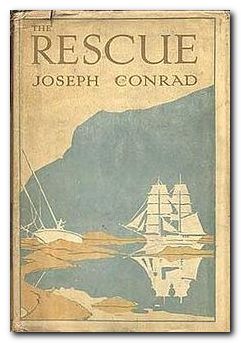

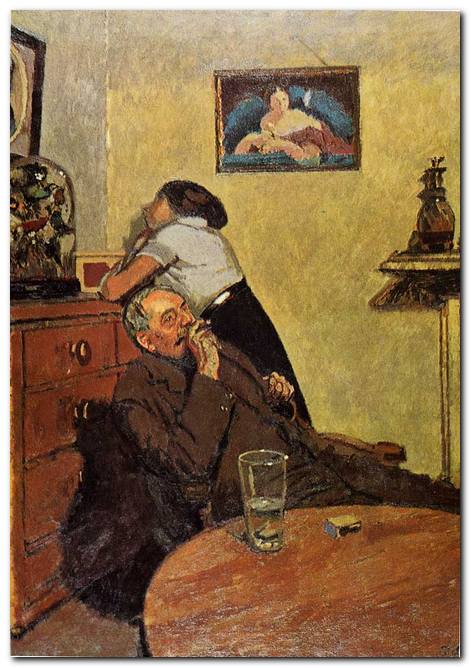

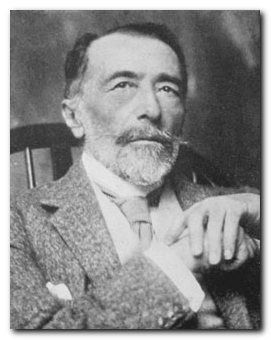
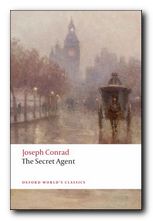
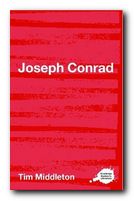 The Complete Critical Guide to Joseph Conrad is a good introduction to Conrad criticism. It includes a potted biography, an outline of the stories and novels, and pointers towards the main critical writings – from the early comments by his contemporaries to critics of the present day. Also includes a thorough bibliography which covers biography, criticism in books and articles, plus pointers towards specialist Conrad journals. These guides are very popular. Recommended.
The Complete Critical Guide to Joseph Conrad is a good introduction to Conrad criticism. It includes a potted biography, an outline of the stories and novels, and pointers towards the main critical writings – from the early comments by his contemporaries to critics of the present day. Also includes a thorough bibliography which covers biography, criticism in books and articles, plus pointers towards specialist Conrad journals. These guides are very popular. Recommended.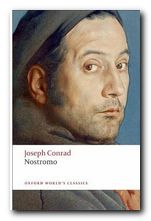 Nostromo
Nostromo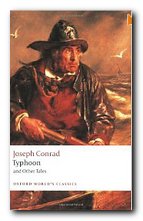
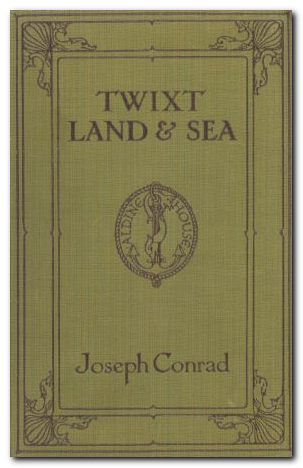
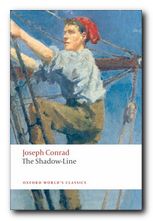

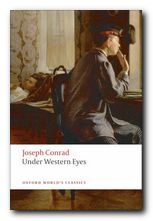 Under Western Eyes
Under Western Eyes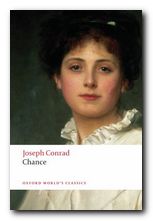 Chance
Chance